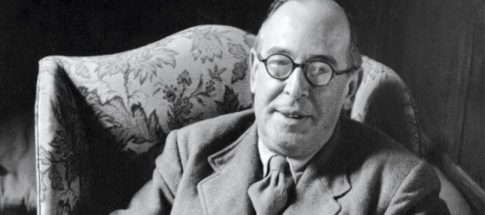Reprinted with permission from Brett McCracken’s blog The Search

“It is at her centre, where her truest children dwell, that each communion is really closest to every other in spirit, if not in doctrine. And this suggests that at the centre of each there is a something, or a Someone, who against all divergencies of belief, all differences of temperament, all memories of mutual persecution, speaks with the same voice.”
-C.S. Lewis, preface to Mere Christianity
I always loved C.S. Lewis’ idea of “mere Christianity”—that there are fundamental beliefs about God and Christ that bind the church together, even while so many of the particulars might be different or contradictory. It’s an idea that makes sense. And it’s comforting. It helps explains why Christianity as a belief system has managed to survive so many centuries and penetrate so many disparate cultures. There are certain core beliefs (amazing, world changing beliefs) that can’t help but endure. And as I’ve spent the last few days in Lewis’ house here in Oxford, his idea—“mere Christianity” is one I’ve thought about again and again.
I think about it while I’m writing my book, for one thing. If there is any underlying reason why I’m writing the book, it’s that I think the church today needs to rediscover “mere Christianity” as opposed to “cool Christianity” or “jazzy Christianity” or “online Christianity” (or whatever other conflated, stylized “Christianity” you can think of). I think we’ve become obsessed with the form and presentation of the Gospel while forsaking its substance (or divorcing substance from form, which is equally problematic). And I think a good dose of “mere Christian” back-to-basics and unity-mindedness could do us some good.
I also thought about this idea as I was in downtown Oxford today, looking at old cathedrals and convents and churches and vestiges of Christianity’s indelible impact on this place. I especially liked seeing the Oxford Martyrs monument, on the spot where Thomas Cranmer and 2 others were burned at the stake for their beliefs. Though the church is not alive here like it once was, the physical and spiritual remnants are enough to inspire anyone. Sitting in the University Church of St. Mary’s on Thursday I was able to catch a free chorale concert by a touring choir from William Jewell College in Missouri. It was sad to me that beautiful cathedrals like this in Oxford are now primarily venues for concerts and tourism, but then when the choir started singing the American folk hymn, “What Wondrous Love is This,” it didn’t matter. It was beautiful and transcendent. When songs like that are still being sung in places like this, the worldwide church is alive and well.
I think about the idea when I’m chatting with Tammy, the other writer who is currently staying at the Kilns, or Donna, who is the caretaker of the Kilns and also lives here. We are all from different backgrounds and Christian traditions, but we are all fond of Lewis and fond of “mere Christian” fellowship. It’s been great hearing about Tammy’s passionate and daring preference for the book of John over anything Paul wrote. It’s fun having an afternoon Pimms-and-pineapple juice with Donna and talking about our mutual appreciation for Tim Keller. It was fantastic when the three of us had dinner and drinks at a restaurant on the banks of the Thames last night in Oxford. The C.S. Lewis Foundation always has a knack for bringing unlikely groups of people together and allowing them to experience the heavenly feeling of mere Christian fellowship… and this week has been one more instance of that.
I will probably be thinking of this idea tomorrow when I go to London and visit some churches (Grace Church Hackney and Hillsong London). I love going to Christian churches in foreign countries (I love going to churches just about anywhere) and seeing how the Christians in a given community worship. I love having communion at these churches—jumping right in to this ultimate sacrament of community, like every Christian should wherever they are in the world. Every church is a little different, and some are very different—but ultimately they all are centered around the same Someone—Jesus Christ—and speak praise and thanks in the same voice—that of the worldwide body of Christ, the Church.
Finally, I think of Lewis’ idea as I sit here, in his bedroom, thinking about the type of Christian he was. Lewis gave so much of himself when he was alive. I think about how he took in some kids from London during the war, and how he gave away most of his income from book sales, and how he replied to every fan letter he ever received. And this is to say nothing of his immense scholarly and literary contributions to the Christian tradition and the world at large. He was a man of God, to be sure, and if I can be a mere Christian in the Lewisian mold I will certainly have lived a good life.
–Brett McCracken